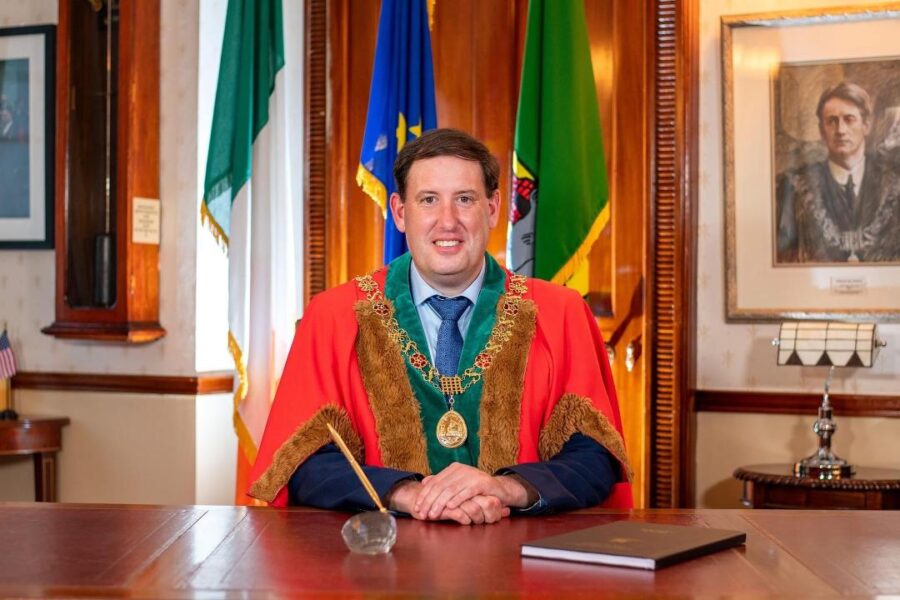
Kieran’s Our City, Our Town Article,
Cork Independent, 13 July 2023
Kieran’s July Historical Walking Tours
My summer walking tours of Cork’s historic suburbs and parts of the city centre continue for July. To encourage engagement, the tours have been free for many years. There is no booking required. Just show up on the day.
Thursday evening 13 July 2023, From Canals to a Mayoralty Chain, The Making of Eighteenth Century Cork, meet at the National Monument, Grand Parade, 6.30pm (free, 2 hours, no booking required for all tours).
For nearly five hundred years (c.1200-c.1690), the walled port town of Cork, built in a swamp and at the lowest crossing point of the River Lee and the tidal area, remained as one of the most fortified and vibrant walled settlements in the expanding British colonial empire. However, economic growth as well as political events in late seventeenth century Ireland, culminating in the Williamite Siege of Cork in 1690, provided the catalyst for large-scale change within the urban area. The walls were allowed to decay and this was to inadvertently alter much of the city’s physical, social and economic character in the ensuing century.
By John Rocque’s Map of Cork in 1759, the walls of Cork were just a memory- the medieval plan was now a small part in something larger – larger in terms of population from 20,000 to 73,000 plus in terms of a new townscape. A new urban text emerged with new bridges, streets, quays, residences and warehouses built to intertwine with the natural riverine landscape.
Economically, in the eighteenth century, the city was booming. By 1730, the population had increased to 56,000, by 1790, the population of the urban area was 73,000. This was a large increase since a population of 20,000, one hundred years previously in 1690. The settlement’s reliance on the harbour and hinterland maintained a lucrative provision trade. Cork comprised on average forty per cent of the total export from Ireland with just over seventy per cent of this total sent to the European mainland. The list of countries included; Denmark, Norway, Sweden, France, Germany, Great Britain including the coastal islands, Holland, Italy, Portugal, Spain, Barbadoes, Turkey and Greenland.
Cork held eighty per cent of the Irish export to Englands’ American colonies. The main ports include Carolina, Hudson, Jamaica, Montreal, Quebec, New England, New Foundland, New York, Nova Scotia, Pennsylvania, Virginia, Maryland and the West Indies. Exports were also sent to New Zealand and the Canaries. By 1800, Cork was reputed to be the most note-worthy transatlantic port.
Wednesday evening, 19 July 2023, Cork and the River Lee, An Introduction to the Historical Development of Cork City; meet at the National Monument, Grand Parade, 6.30pm (free, 2 hours, no booking required for all tours).
This tour explores the city’s earliest historical phases and its connection with the riverscape. Cork City city possesses a unique character derived from a combination of its plan, topography, built fabric and its location on the lowest crossing point of the river Lee as it meets the tidal estuary and the second largest natural harbour in the world. Indeed, it is also a city that is unique among other cities, it is the only one which has experienced all phases of Irish urban development, from circa 600AD to the present day.
Friday evening, 21 July 2023, Shandon Historical Walking Tour; explore Cork’s most historic quarter; meet at North Main Street/ Adelaide Street Square, opp Cork Volunteer Centre, 6.30pm (free, duration: two hours, no booking required).
Tradition is one way to sum up the uniqueness of Shandon Street. Despite being a physical street, one can stroll down (or clamber up !), the thoroughfare holds a special part in the hearts of all Corkonians. The legacy of by-gone days is rich. The street was established by the Anglo-Normans as a thoroughfare to give access to North Gate Drawbridge and was originally known as Mallow Lane.
Shandon Street locals identify with the special old qualities of the street. Different architectural styles such reflect not only the street’s long history but also Cork’s past. The chosen sites in this guide are fascinating markers of the street’s development through the ages.
For nearly 250 years, the bells of St. Anne’s Church have rung out over Cork City. Consequently their fame has spread all over the world especially with the immortal words of Rev. Francis Mahony’s poem “The Bells of Shandon” echoing behind their history; “With deep affection and collection, I often think of those Shandon Bells, whose sounds sounds so wild would, in days of childhood fling round my cradle their spells”. Fr. Prout was the pen name of Fr Francis Mahony, a regular cleric,who spent many years of his childhood living nearby, listening to the bells. Even in death, Fr Prout did not have travel far as his remains lie in a family vault close to the foot of the steeple.
Saturday afternoon, 29 July 2023, Views from a Park – The Black Ash and Tramore Valley Park & Surrounds, historical walking tour; meet at Halfmoon Lane gate, 2pm (free, duration: 90 minutes no booking required).
Historically William Petty’s 1655 map of the city and its environs marks the site of Tramore Valley Park as Spittal Lands, a reference to the original local environment and the backing up of the Trabeg and Tramore tributary rivers as they enter the Douglas River channel. We are lucky that there are also really interesting perspectives on the area recorded through the ages, which have been great to research.
Caption:
1210a. Lord Mayor of Cork Cllr Kieran McCarthy with the 1787 mayoralty chain, present day (picture: Cork City Council).